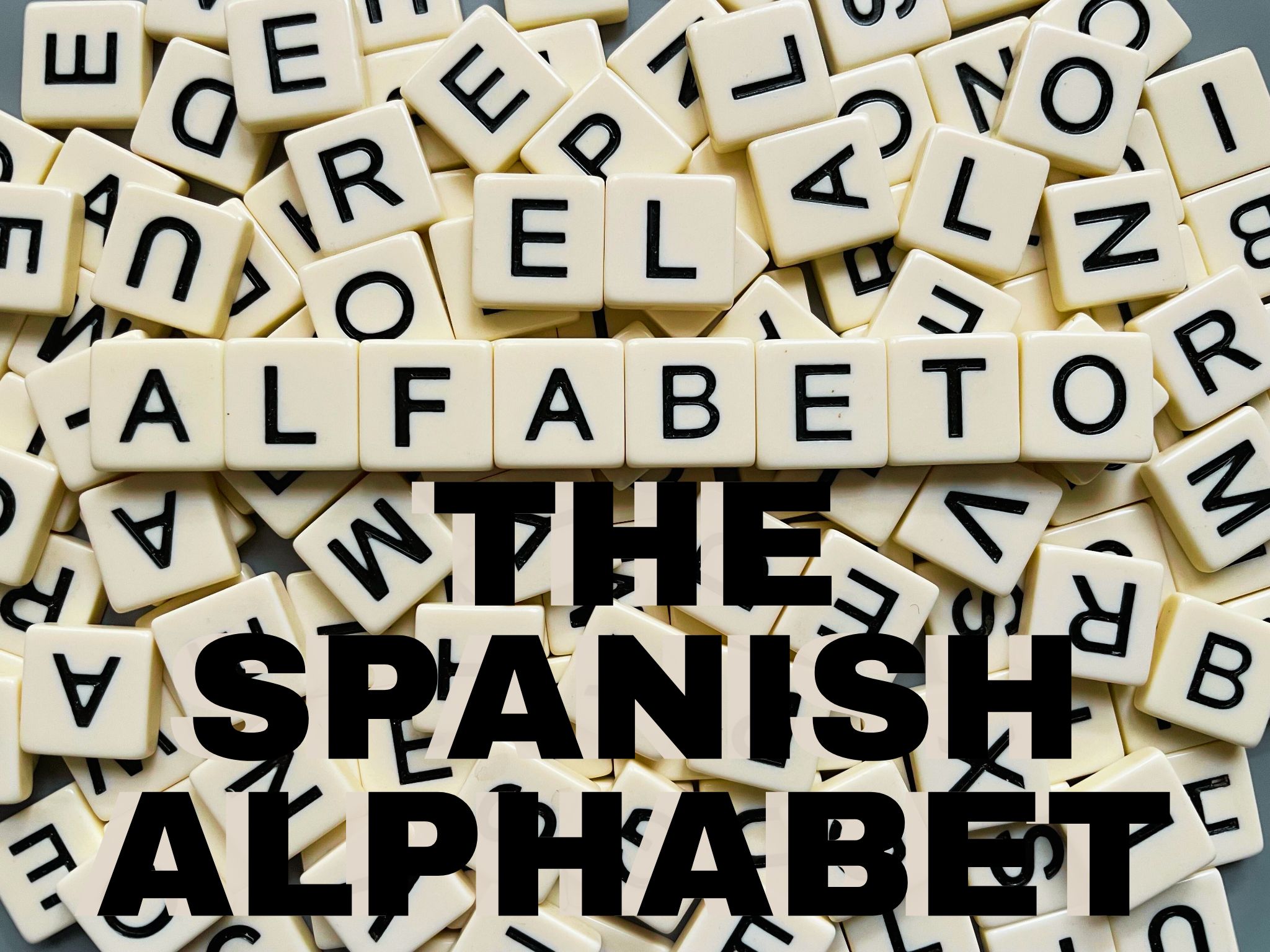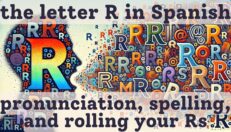The Spanish Alphabet: A comprehensive guide (with audio)

Get our free email course, Shortcut to Conversational.
Have conversations faster, understand people when they speak fast, and other tested tips to learn faster.
More infoLearning the Spanish alphabet is one of the easiest wins when it comes to improving your Spanish pronunciation. In today’s lesson we’re providing a straightforward introduction to the alphabet in Spanish, which translates simply as el alfabeto.
We’ll cover the names of the letters in Spanish, providing audio recordings for each one so you can learn exactly how they’re pronounced. Since the alphabet is the basis for pronouncing Spanish words, we’ll also start with an overview of which letters have pronunciations that need special attention. As always, we provide links to many of our related posts that cover pronunciation rules for specific letters.
Now let’s get started with our lesson on the Spanish alphabet!
Pronunciation: Spanish vs English
Are the letters of the alphabet in Spanish pronounced the same way as they are in English? While many of the letters sound the same between the two languages, there are some important differences that you’ll need to master.
The good news is that the pronunciation of nearly all the letters in Spanish remains the same every time. So whether you see a given letter at the beginning, in the middle, or at the end of a word, it will nearly always be pronounced the same way.
This is especially useful with the Spanish vowels, since their pronunciation is a bit different from what you’re used to in English. But once you know how to pronounce each one properly, you’ll be able to pronounce them correctly in any Spanish word! Beyond the simple vowel sounds we’ll see today, we detail how to pronounce Spanish vowel combinations in our post on Spanish syllables in the section on diphthongs and triphthongs.
Among the consonants, there are some significant differences between the English and Spanish pronunciations that you need to know with the letters G, H, J, R, V, X, and Z. In addition, we have a unique 27th letter in Spanish that you don’t have at all in English: Ñ. Two consonant pairs are also pronounced so differently from their component letters that they were once considered separate letters themselves, so you’ll need to pay close attention to the pronunciation of CH and LL. Click through to specific lessons on how to pronounce each of the letters we’ve highlighted with hyperlinks.
Finally, you’re probably aware of the fact that many Spanish words contain accent marks on certain vowels. These are not considered distinct letters of the alphabet; they’re just accented versions. Accent marks are nonetheless vital for proper spelling and pronunciation of the words that contain them. We explain these rules in great detail in our post on Spanish accent marks.
Spanish alphabet pronunciation
How do you pronounce the letters of the alphabet in Spanish?
We’ve been teaching Spanish pronunciation for so long here at BaseLang that the video we present here was one of our first ever, from 2016! The Spanish alphabet hasn’t changed one bit since then, so we recommend you spend a few minutes with Melissa to hear how she explains each letter and their pronunciations.
The Alphabet in Spanish
How do you say each of the letters in Spanish? If you want to practice each individual letter, this Spanish alphabet chart is for you. Play the sound using the embedded player to learn each Spanish letter, along with an example word in Spanish that starts with that letter.
We’re working on a related series of blog posts that introduce useful words that start with each letter of the alphabet in Spanish, so click through the highlighted letters to see the lessons we’ve published so far.
How many letters are in the Spanish alphabet? As you can see, the Spanish alphabet has 27 letters, with the letter Ñ falling between N and O.
| Letter | Name | Example | Sound recording |
|---|---|---|---|
| A | a | Azul | |
| B | be | Bus | |
| C | ce | Casa | |
| D | de | Día | |
| E | e | Elefante | |
| F | efe | Feliz | |
| G | ge | Gato | |
| H | hache | Hola | |
| I | i* | Iglesia | |
| J | jota | Jirafa | |
| K | ka | Kilo | |
| L | ele | León | |
| M | eme | Mango | |
| N | ene | Naturaleza | |
| Ñ | eñe | Ñoño | |
| O | o | Oro | |
| P | pe | Perro | |
| Q | cu | Queso | |
| R | ere* | Ratón | |
| S | ese | Sapo | |
| T | te | Toro | |
| U | u | Uva | |
| V | uve* | Vaca | |
| W | doble uve* | Whisky | |
| X | equis | Xenón | |
| Y | ye* | Yeso | |
| Z | zeta | Zorro |
* A few letters in the Spanish alphabet are sometimes referred to by other names than we’ve listed in this Spanish alphabet chart, so let’s see the other alternatives you may come across.
The simple letter R is called ere, which is pronounced with a light tap of the tongue on the roof of the mouth. When we roll our Rs, however, whether the word is spelled with a single R or double RR, we’ll refer to this rolled letter R as erre.
The letter Y is frequently called i griega, which translates literally as Greek I. As its counterpart, the letter I is also known as i latina, which is the Latin I.
The letter V is usually called uve, but in some regions it’s simply known as ve. Likewise, the letter W can be referred to as doble ve, doble uve, or even uve doble, while it’s also sometimes called doble u.
Spanish Alphabet Quiz
Have you learned the names for each Spanish letter yet? Here’s some practice where we spell out six words for you. Play the audio file and write down each letter to spell the Spanish words. Or just scroll down and you’ll see the six words to follow along with!
Key:
- Taxi
- Casa
- Mujer
- Teléfono
- Pasaporte
- Extrañar
Conclusion: The Spanish Alphabet
The alphabet is a great place to start when you’re learning Spanish pronunciation. It’s also pretty important to get it right from the very beginning of your Spanish-learning journey so that you adopt the right pronunciation habits from the outset.
Today’s post was a very straightforward introduction to the 27 letters of the alphabet in Spanish. The most important part of the lesson was our Spanish alphabet chart where you can hear each letter pronounced correctly, as well as the early BaseLang video where Melissa takes you through each letter in turn. We concluded our list of Spanish letters with details on the ones whose names sometimes vary.
We also started off with a basic introduction to the main letters in Spanish whose pronunciations differ from their English counterparts, as well as a few other details like diphthongs, the unique pronunciations of LL and CH, and the 27th Spanish letter: Ñ. As always, we included plenty of links to our related lessons so you can continue learning everything you want to know about the Spanish alphabet!



